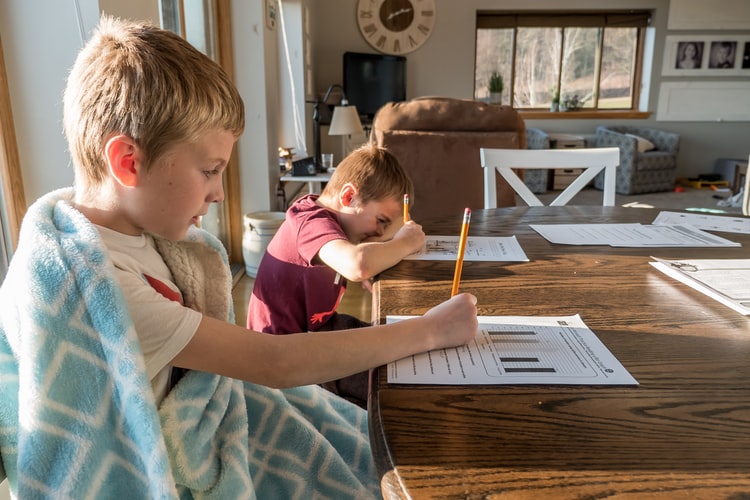This isn’t just a simple blog, here are some impacts of how difficult is homeschooling during COVID-19? It’s a complete guide to homeschooling, especially in this current pandemic.
- If you are a parent new to this task, this is a how-to-get started guide with some of the best tips and resources to help you out.
- Also if you are a parent who has been homeschooling for years, this is a checklist of right and wrong and an introduction to new ideas and more resources that you might not have thought of or discovered before.
A quick briefing on the topic:
- What homeschooling is?
- Why it is needed?
- Several new ideas and fun activities to use in home-schooling (Will be discussed in the next article in December 2020)
- A list of as many of the best resources available online as possible to help your coaching of your kids. (Will be discussed in the next article in December 2020)
For more resources, Eshoparchive is always available with more interest and related topics. Just one quick search opens you to a whole undiscovered world of homeschooling ideas and sources, especially during the coronavirus pandemic.
What Is Homeschooling?

Everyone is well aware of what the term ‘homeschooling’ means, but for those of you who don’t, homeschooling is simply teaching your children at home what they would learn in their schools, colleges, or other institutes. Now, this can include any and all subjects and activities, from academics to home economics, from technical to creative. Whether it be STEM subjects, or sewing and cooking, or basic reading and writing, or even music and arts, everything can be taught at home if you are just capable and creative enough to manage it.
Although the concept of homeschooling has been around since anyone can remember, it finally started achieving the true recognition it deserved in the 1960s when educational reformists were dissatisfied with the quality of industrialized education and began a revolution. For forever, various cultures have supported teaching your children at home with their core belief that the child’s home is his/her first school. It is at home that kids first learn to walk, talk, and play. And it is at home where they should be taught basic life skills and academics. Even now, most parents opt for homeschooling as they believe it to be more effective than traditional education.
The Need Of The Hour For HomeSchooling
Now with the current global pandemic, homeschooling is the new norm and the need of the hour in this crisis. With the virus forcing people to stay holed up in their homes and attacking children and old people most, the entire world has enforced strict lockdowns, quarantines, and SOPs, which include social distancing. As a result, educational institutes have shut down worldwide, leaving children at the mercy of their parents to learn and parents at the mercy of their children to teach. Most educational institutes have turned to teach online, providing online classes through applications like Google Classroom and Zoom, but let’s face it; most of the world’s population lives under the poverty line and does not have access to technology that allows them to stay a part of this new system.
So what can these people do?
The answer is, of course, homeschooling! But then again, how to do it? Whether you are new to homeschooling or have been doing it for years, it cannot be denied that the ordeal is daunting, and everyone needs a little help, every once in a while, in the form of new ideas and techniques to keep going. And for that purpose, here is not just a guide for parents new to homeschooling to get you started, but also a list of creative ideas and resources that all parents (new or seasoned at the task of homeschooling) can use.
How To Continue Homeschooling In 2021/2022?
Children are tricky. It is an unwritten fact in the hypothetical rulebook of life that no two people, including children, are alike. Now you might be thinking, what does that mean, and how is it relevant to homeschooling? Well, for starters, it simply means that every person is unique in how they think, act, work; everyone has different interests and capabilities; everyone has different personalities and mindsets; and so forth. And how does this apply to coach children at home? Well, that’s obvious. Each child thinks differently, acts differently, and hence, has to be taught differently. What works for one might not for another; after all, all five fingers are not equal, are they? Moreover, every child has their own area of expertise and talents and hobbies.
Scheduling

Efficient scheduling is the first and foremost task of the process, but it is not as simple as it looks.
Firstly, you need to start slow, especially if this is your and your child’s first time learning at home. Additionally, as mentioned above, children get easily bored and frustrated by monotony. This means that strict schedules, especially those meant to replicate actual school systems and curriculum, will, more often than not, fail.
The key is to make it interesting and exciting. Following is a list of ideas on how to do that:
- DIVIDE IT UP: Instead of following the system of educational institutes and enforcing back-to-back learning in only the daytime, divide it throughout the day: morning tonight. Come up with a schedule that is no burden on your children and allows them to balance work and play, but at the same time have a routine. Apart from just breaks for eating and naps, give them breaks to play, do what they want to do, go around, and have fun. This helps them stay fresh throughout the day and actively learn without getting burdened.
- MIX AND MATCH: This means exactly what you think. Not just the subjects, but mix and match the activities too. Alternate between technical subjects and creative activities. And not only within a single day, but this also has to be done across the days too. Instead of creating just one weekly schedule to be followed exactly every week, create a monthly one. So that each week is different, new, and exciting, let your children look forward to learning instead of running away from it because of the same old boring routine they have gotten used to.
- THINK OUT OF THE BOX: Most educational institutes focus solely on rote learning, and it’s about time we understand that is not how students learn, especially younger ones. So instead of going by the book, think creatively. Come up with exciting activities, use interactive exercises, find varying ways to teach, experiment. Just be unconventional! Find what works best for you and your child! Keep it easy on them and inspire them to think and get their wheels churning on their own. Kids learn faster when they do it themselves. Do they ask a question? Cross-question them until they find the answer themselves, and trust me, they’ll remember it forever then. Do they get bored with reading? Make it a competition, use reward systems, motivate them with incentives.
Still unsure of what to do? Search online for exciting homeschooling timetables for your kids; the Facebook page by the name of Croxteth Family Matters is a good place to start!

[…] interactive tools and worksheets. Whether you have young children learning to read and write or older ones struggling through algebra and Newton’s Laws, and more; […]